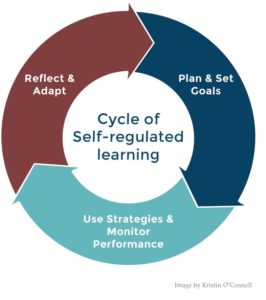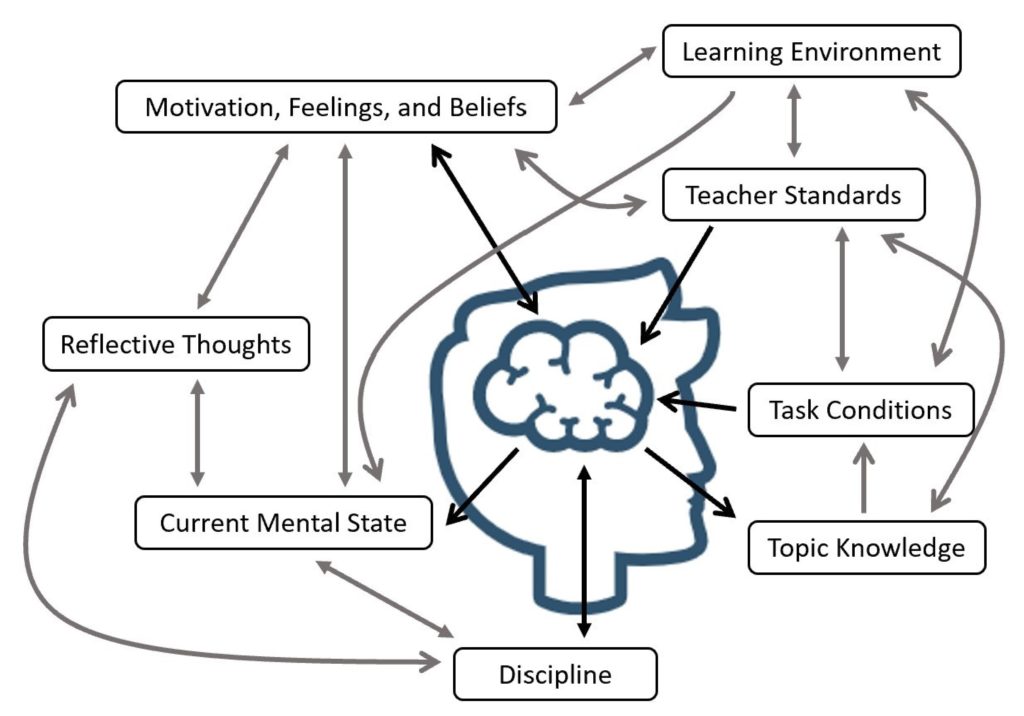2 What is SRL and Where Do We Start?
Popular SRL Models
Among the several available SRL models in research, there is agreement that the SRL process is a recursive cycle comprised of generally identifiable phases: preparation, performance, and appraisal. While models vary in detail and process breakdown, these phases typically involve some variation of setting goals, selecting and planning strategy use, continually monitoring progress against a target or ideal, and reflecting on the outcome or success of the process with designs on improving in the future. Here is a wonderfully clear and simple graphic showing this general SRL model (used with permission from Kristin O’Connell ).

The most academically cited SRL models in my research are known as the Zimmerman model and the Winne and Hadwin model. First unveiled in 1989, the Zimmerman model—which is functionally similar to this graphic—is a cyclical model identifying three SRL phases: forethought, performance and self-reflection (while Kristin did not label these three colour-coded regions, she mentioned it was designed from the Zimmerman model). While the current iteration of the Zimmerman model23 contains a little more detail than this graphic, research indicates that it remains popular specifically because it is easier for educators to explore and apply than more elaborate SRL models.26
For comparison against the simple SRL model, we have the elaborate Winne and Hadwin model, presented in 1998.27 Despite being less intuitive, the Winne and Hadwin model is favoured for use in research with digital learning.,26 It breaks SRL into a four-phase, recursive feedback loop of processes similar to those discussed, however with more explicit emphasis on active metacognition during each phase. Here, is my interpretation of the Winne and Hadwin model (and even still I may have simplified it).

Where Do We Start?
Regardless of model, research has shown that SRL not only operates through cognitive and metacognitive processes but is also influenced by the learning environment, and student motivation, behaviour, and sense of self. This makes it difficult to research in its entirety, and even harder to isolate and study a single specific variable within such a tangled learning process.26 Of the processes and variables embedded within SRL, it is metacognition that is considered the hub,28 with one meta-review of the literature concluding it is the most important predictor of learning performance.29 Attributed to the research of John Flavell, metacognition once stood as a separate learning perspective distinct from SRL; however, continued research has noted the entanglement of these two concepts,21 showing that metacognition is present throughout the SRL process of students engaged in digital learning.17 Unfortunately, multiple research studies have also reported difficulty in evaluating metacognitive strategies as an absolute, agreed upon definition of metacognition remains elusive.3,30
BOTTOM LINE
*Zimmerman (2002), p. 66

